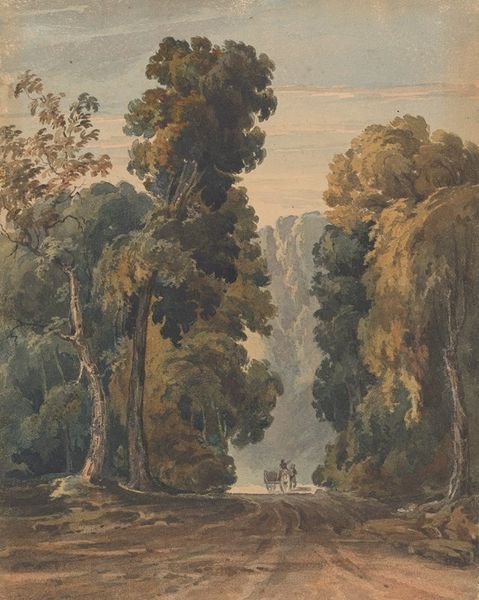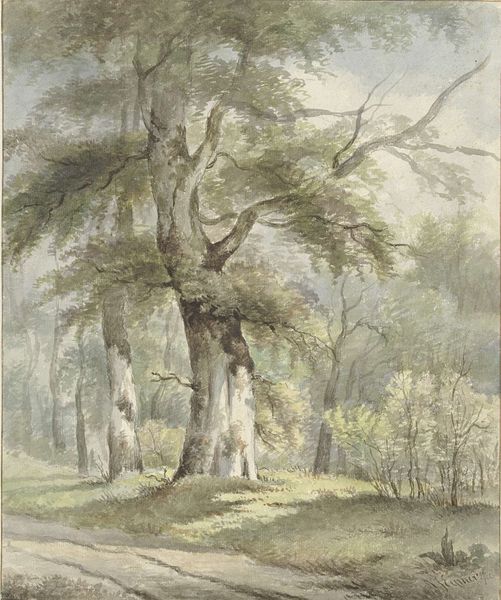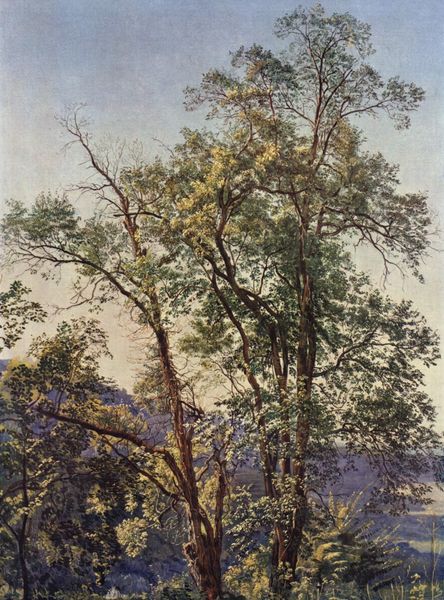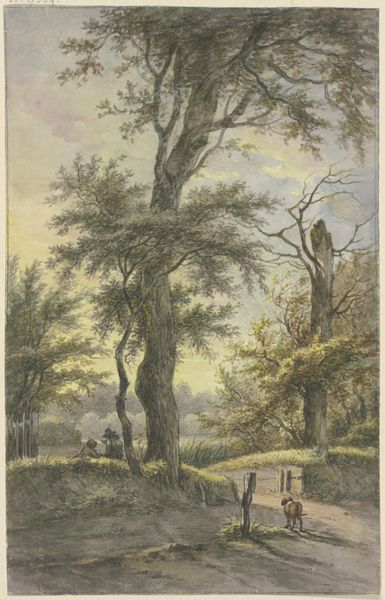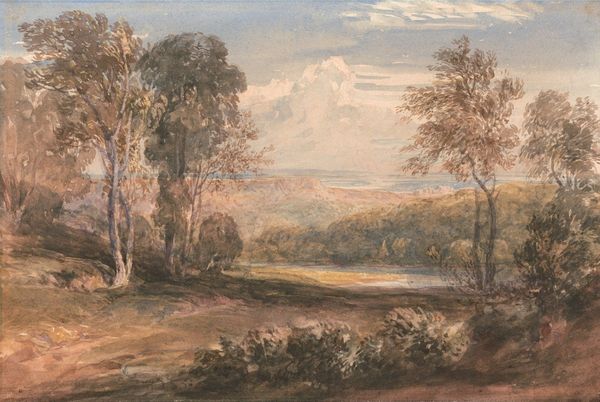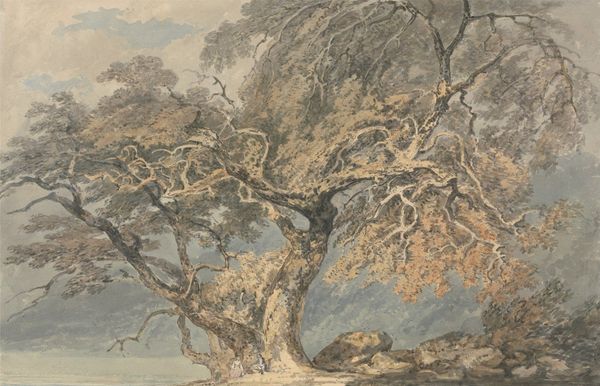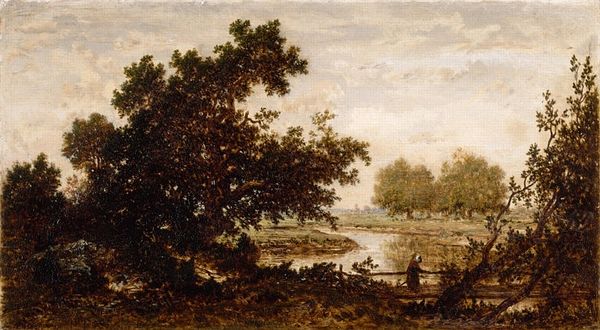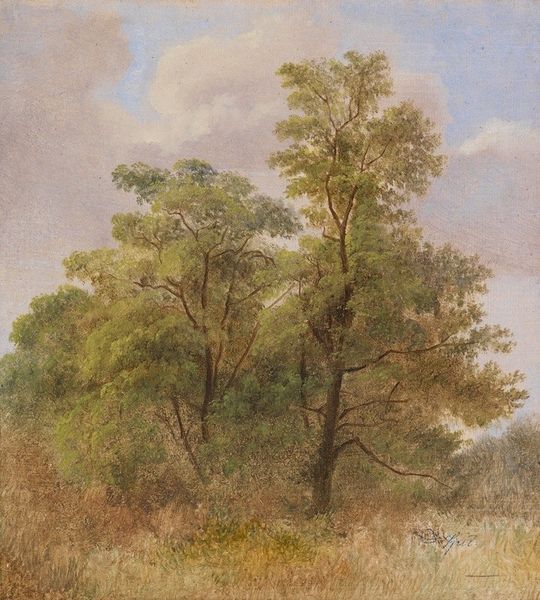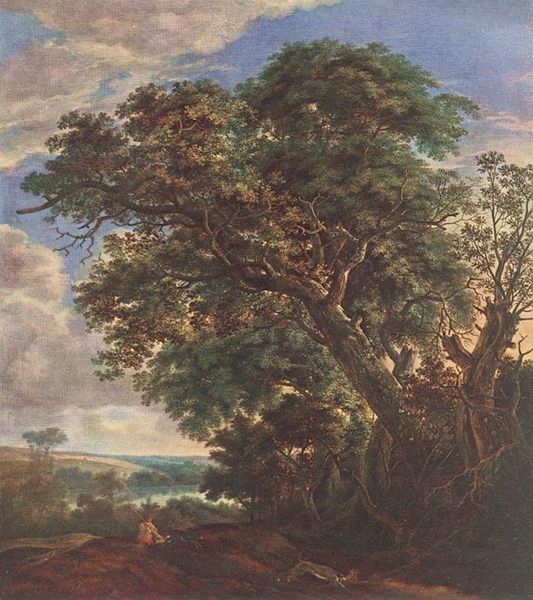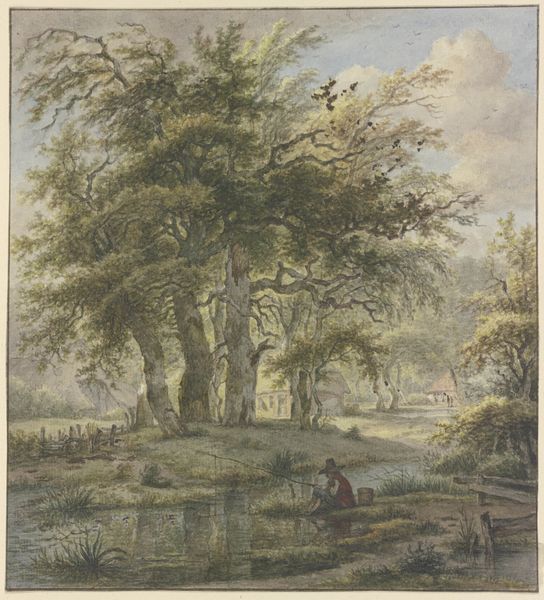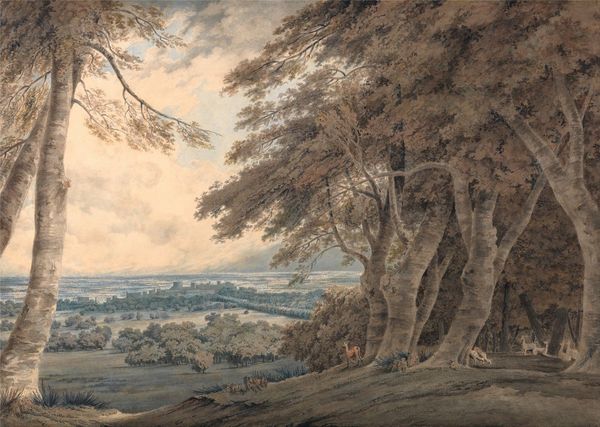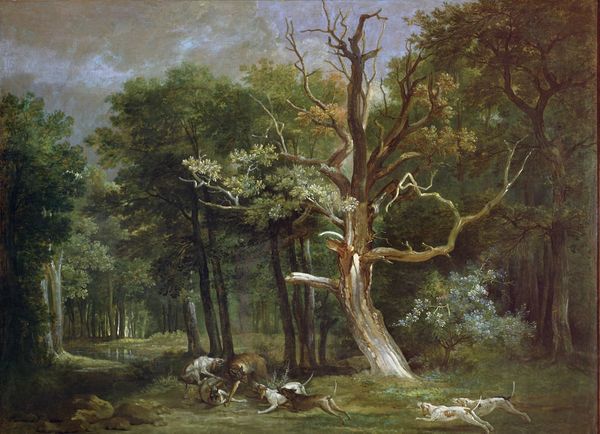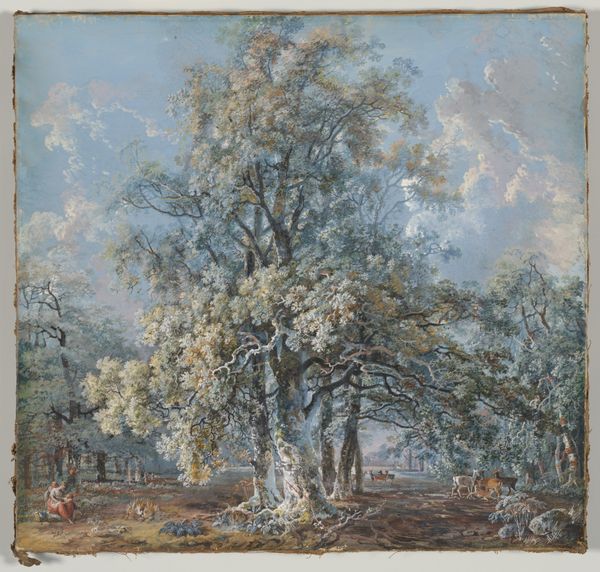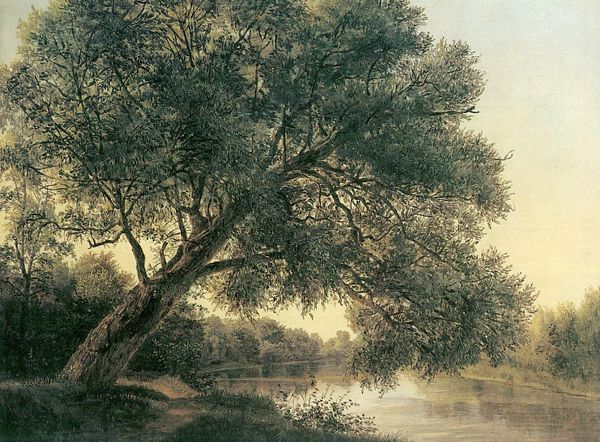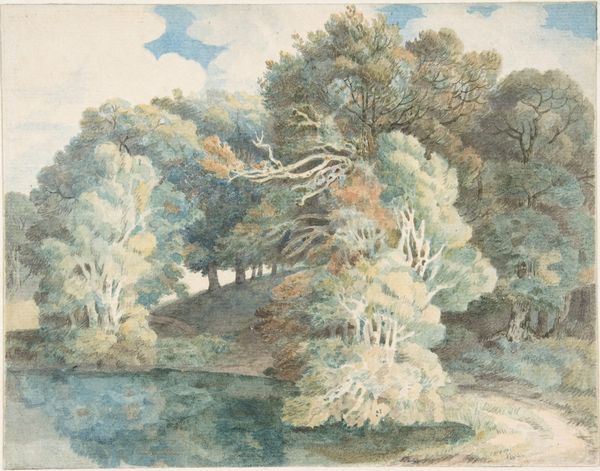
plein-air, watercolor
#
plein-air
#
landscape
#
oil painting
#
watercolor
#
romanticism
#
watercolour illustration
#
watercolor
Copyright: Public domain
Editor: We're looking at "Trees and Pond" by John Ruskin, made in 1832, a watercolor and oil painting. It has such a serene and contemplative atmosphere. What stands out to you in this work? Curator: The choice of medium here, watercolour, becomes critical. During this period, landscape painting and especially plein-air painting allowed for deeper dialogues about humans relationship with nature and particularly ownership. How might Ruskin’s upper-class status inflect this representation, or not? The style is obviously Romantic, so how is nature itself being romanticized and therefore becoming a resource, implicitly? Editor: So you are suggesting that even something as seemingly idyllic as this landscape points to bigger societal themes? Curator: Exactly. This wasn’t painted in a vacuum. Ruskin, and many other artists of this time, are inherently tied up with colonial expansion and resource extraction. The ownership, or ‘picturesque-ness’ of the landscape needs to be questioned. Who is allowed access to this nature and on whose land does this exist? Editor: It's interesting to consider how access and perspective play into even these pastoral scenes. The privilege inherent in simply having the time and resources to create a watercolour en plein air is not lost on me. Curator: Precisely. Thinking about how power and privilege manifest in visual culture helps us confront blind spots within art history. Editor: This really makes me rethink the way I see these traditional landscape paintings. Thank you for this. Curator: It’s all about context, asking those difficult questions, and acknowledging historical, social, and intersectional issues in art!
Comments
No comments
Be the first to comment and join the conversation on the ultimate creative platform.
